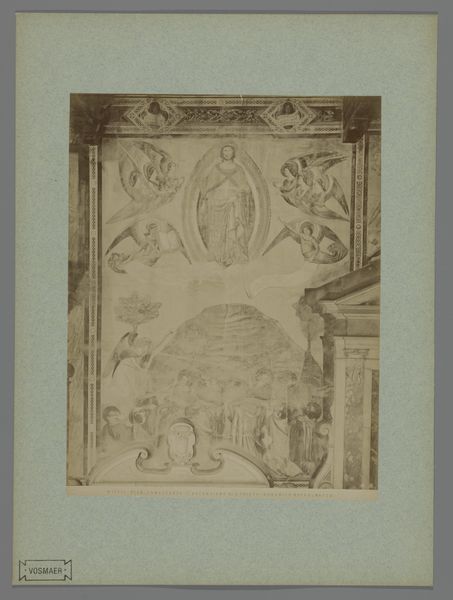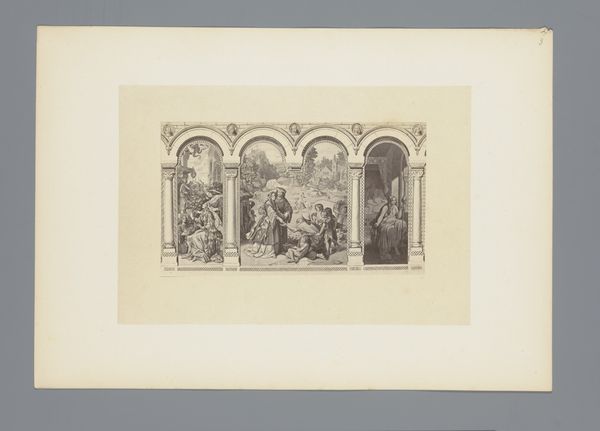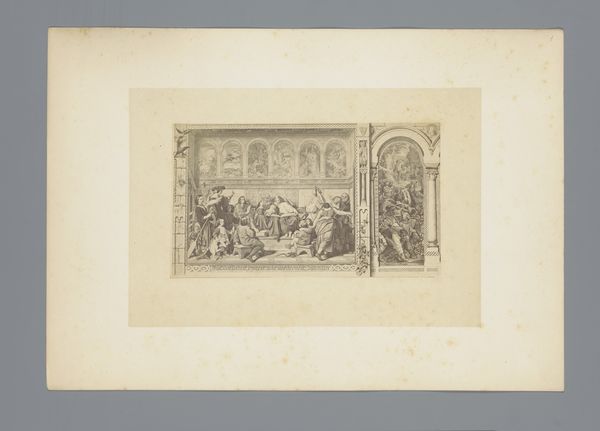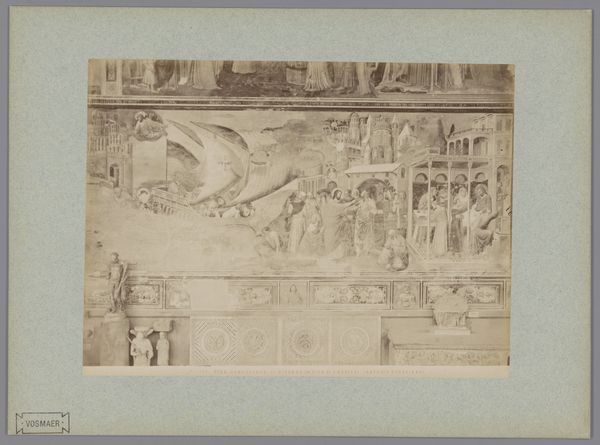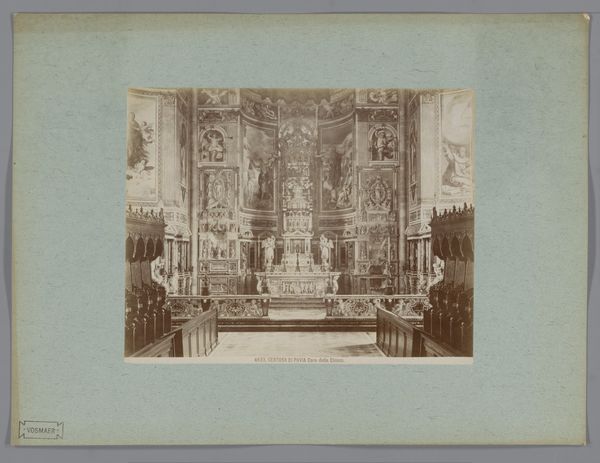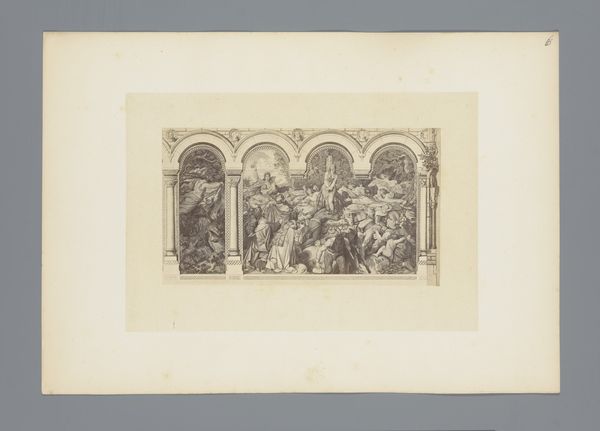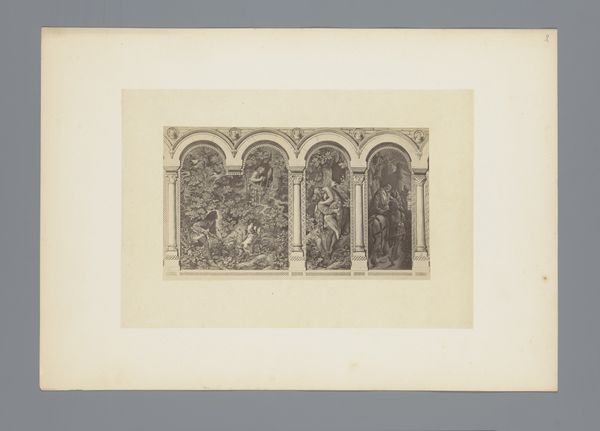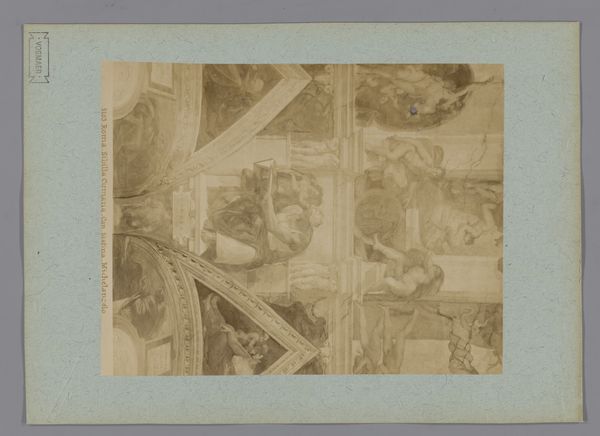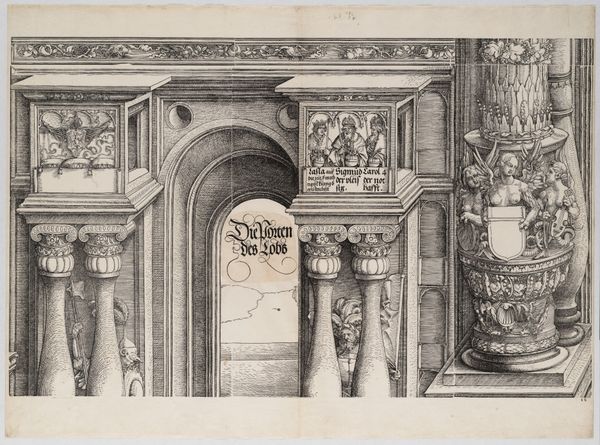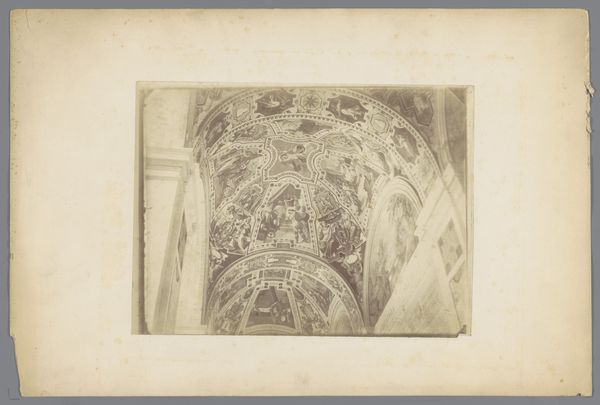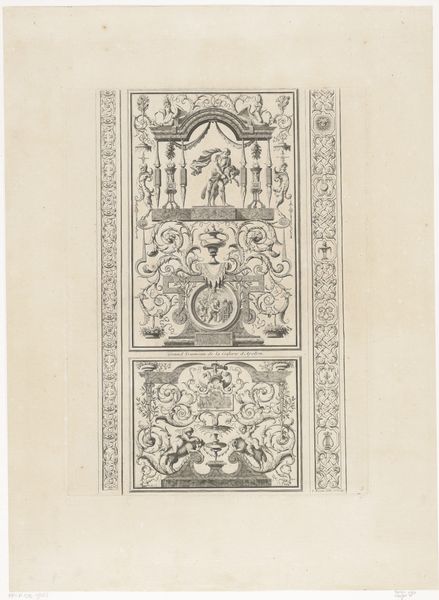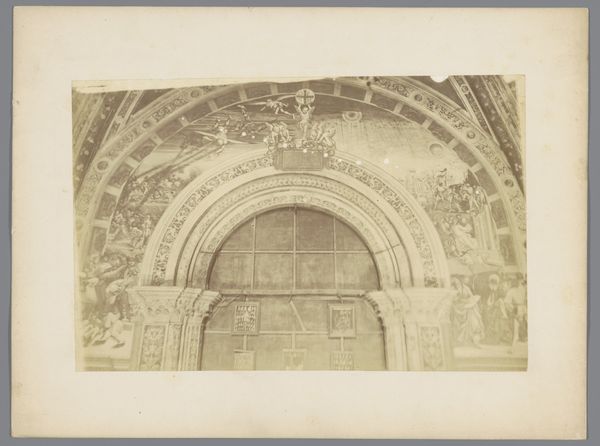
Fotoreproductie van het fresco Annunciatie en twee engelen door Benozzo Gozzoli in het Campo Santo te Pisa 1857 - 1900
0:00
0:00
print, fresco, photography
#
portrait
#
narrative-art
# print
#
figuration
#
fresco
#
photography
#
italian-renaissance
Dimensions: height 195 mm, width 247 mm, height 260 mm, width 354 mm
Copyright: Rijks Museum: Open Domain
Editor: This is a photographic reproduction from between 1857 and 1900 of a fresco, the Annunciation with two angels by Benozzo Gozzoli, originally located in the Campo Santo in Pisa. It’s fascinating to see it in this format – the photograph flattens the fresco, almost turning it into a tapestry. How do you approach a work like this, particularly considering it's a reproduction? Curator: The act of reproduction here becomes central. It isn't merely a record; it's a transformation. Alinari’s photograph mediates our encounter with Gozzoli’s fresco. We must consider the materials: the photographic chemicals, the paper, the printing process, and how these introduce a new layer of interpretation tied to 19th-century modes of seeing and consuming art. What was Alinari’s intention in creating this object? Editor: I suppose they aimed to democratize access to Renaissance art through mass production and sale. Was it purely a commercial decision? Curator: Partially, yes, capitalism touches even the most 'sacred' art forms. But also consider the rising interest in art history during that period, fuelled by figures like Ruskin and Semper, as well as archaeology's increased appeal, all generating demands that studios like Alinari fulfill with efficient operations and extensive production. The print gives us new material to interpret and, with it, we consider not only Gozzoli, but also the economic and social structure within which images like this circulate. How does knowing its a photo influence your engagement with it, versus, say seeing a painting that depicts a fresco? Editor: It shifts my focus, because I find myself more curious about how photographs gained value as documents and sources of visual culture back then. And it really makes you question the value of artistic labor too. Thanks for pointing that out! Curator: Indeed! We must remember, the image carries layered contexts of both production and consumption!
Comments
No comments
Be the first to comment and join the conversation on the ultimate creative platform.
